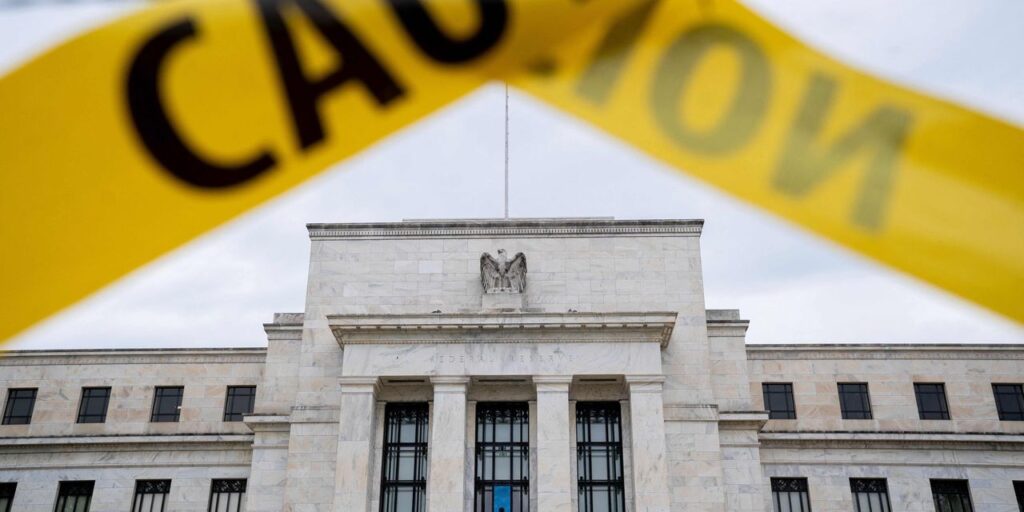Leveraged loan defaults are heading for the third-worst year in history as Federal Reserve interest rate hikes take a toll, according to Goldman Sachs.
The volume of defaults by riskier companies in the bulging leveraged loan market has risen in June, bringing the total amount of soured debt in the sector to $24.5 billion (see chart), according to a tally by Goldman Sachs analysts.
That’s a worse start to the year for defaults than in 2008 as the global financial crisis was unfolding. It’s also the highest volume of defaults outside of the 2009 and 2020 recessions, according to Goldman researchers.
“We reiterate our view that the pace of defaults in the leveraged loan market will likely remain elevated,” Lotfi Karoui’s team wrote in a weekly client note, adding that the “hawkish surprise” from the Fed in the past week “suggests issuers with a large exposure to floating rate liabilities are unlikely to get an relief on their interest expenses.”
The ugly backdrop for loan borrowers comes after the Fed has jacked up its policy rate to a 5%-5.25% range in the past 15 months from nearly zero. On Wednesday the central bank took a breather by skipping a June rate, but signaled two more rate increases could be in store yet this year.
Leveraged loans are a high-risk type of floating-rate financing for companies that already have a substantial amount of debt, and often poor credit histories.
They’ve helped give rise to leveraged corporate buyouts, or LBOs. The sector also has produced a related cottage industry where Wall Street packaged up these loans into bond deals, called collateralized loan obligations (CLOs). Exchange-traded funds ETFs that give individuals a way to invest in the sector have followed.
Borrowers with floating-rate debt have been particularly hard hit by the Fed’s higher rates and tightening of financial conditions to battle inflation. After swelling to a record $1.436 trillion size in September 2022, loan issuance has slowed to a trickle this year, reducing the size of the loan index by $38 billion, according to Barclays.
Against that backdrop, major ETFs that track U.S. leveraged loans have been hit with big outflows. The roughly $2.2 billion First Trust Senior Loan Fund ETF
FTSL,
saw its assets under management fall by about 22.2%, according to Goldman data, while assets at the near $4.5 billion SPDR Blackstone Senior Loan ETF
SRLN,
dropped 39.8% this year.
Higher interest rates also can mean potential for higher returns, when defaults are avoided. With that backdrop, total returns in the leveraged loan sector have been in the 5% range on the year, according to Goldman data.
Read (from January): The leveraged loan ‘downgrade wave’ is starting as era of cheap debt fades
Stocks were lower Friday, with the Dow
DJIA,
and S&P 500
SPX,
off 0.1% and the Nasdaq Composite Index
COMP,
0.4% lower, according to FactSet.
Read the full article here













